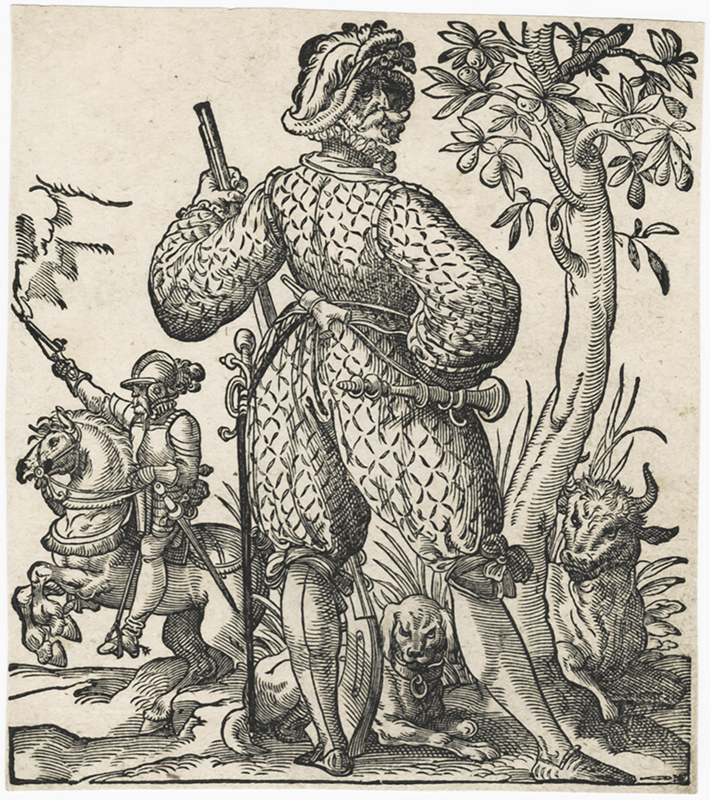
19th, 20th & 21st Century Fine Prints
707-546-7352 · fax 707-546-7924 · web: www.annexgalleries.com · email: artannex@aol.com
Page 134 from the Kunstbüchlin (A Little Book of Art) by Jost Amman

Page 134 from the Kunstbüchlin (A Little Book of Art)
Jost Amman
Page 134 from the Kunstbüchlin (A Little Book of Art)
Jost Amman
1539 - 1591 (biography)The Kunstbuchlin was a book of 239 ewoodcuts of the late Renaissance era, illustrating people in various trades, professions, religions, and classes from the second half of the 16th century. Also included are figures of mythology, such as cherubs and a skeletal representation of death.
The full title of this book loosely translates to: Art booklet: In it, in addition to the depiction of many spiritual and secular, high and low-ranking persons, including the Turkish emperors, all kinds of artistic pieces and figures: also the seven planets, ten old captains and commanders, riders and contrafacture of horses, all kinds of thunderers, fencers and then real helmets and helmet covers: everything in the most elegant and artful way.
A note on the dating of this work: Jost Amman, a noted illustrator of the time and referred to in the book as "Amman of Nuremberg," likely created these images in the 1570s or 1580s, as some of the images are included in earlier publications (such as the 1578 Kuunst- und Lehrbuchlain fue die anfahenden Jungen; the Book of Art and Instruction for Young People). Though Amman had died in 1591, the book was published in 1599, and thus the works are often misdated as having also been created in 1599. This impression may have been from an even later printing due to the weight of the lines.


